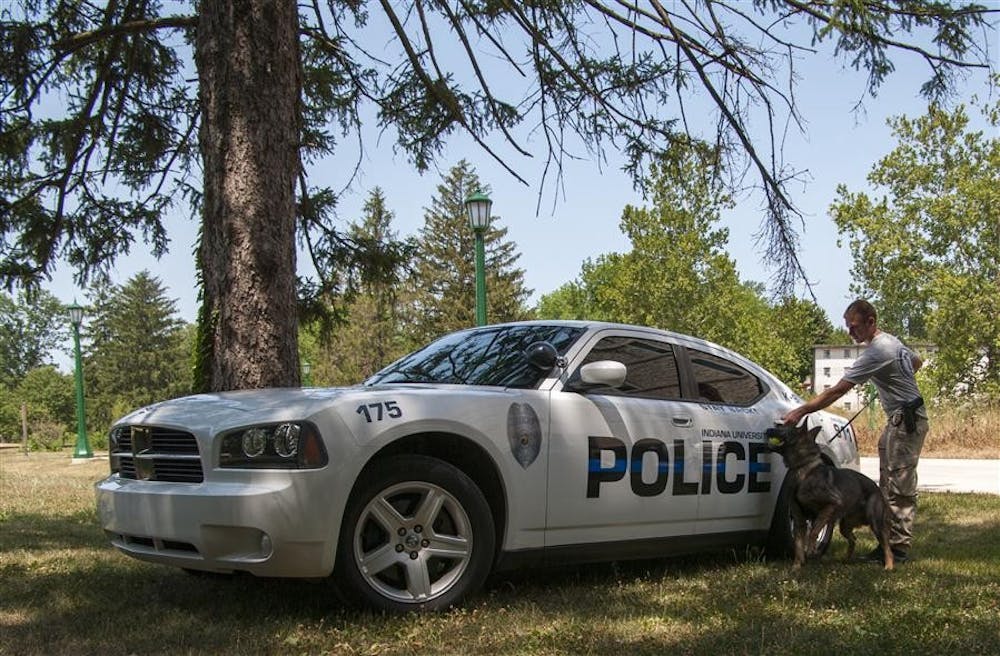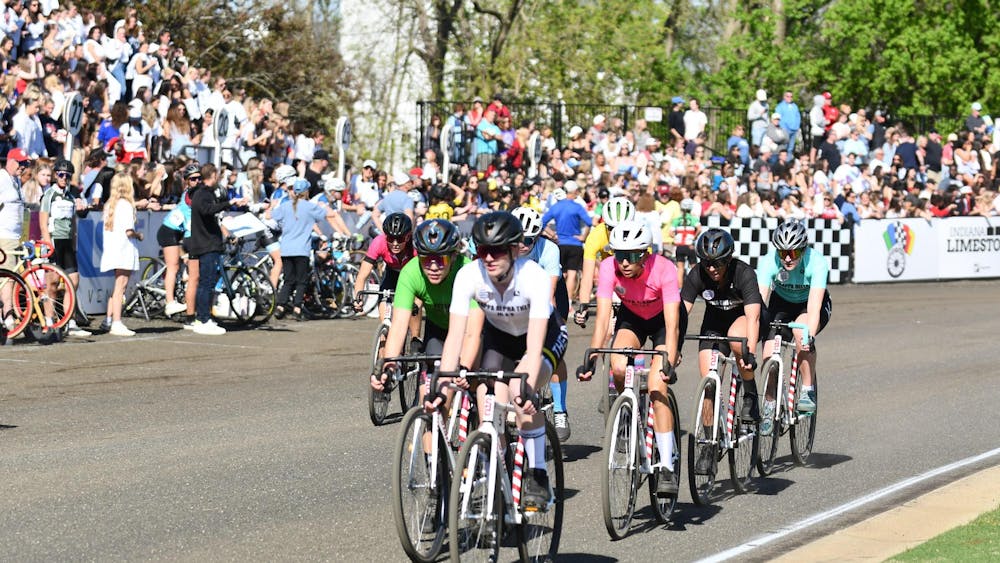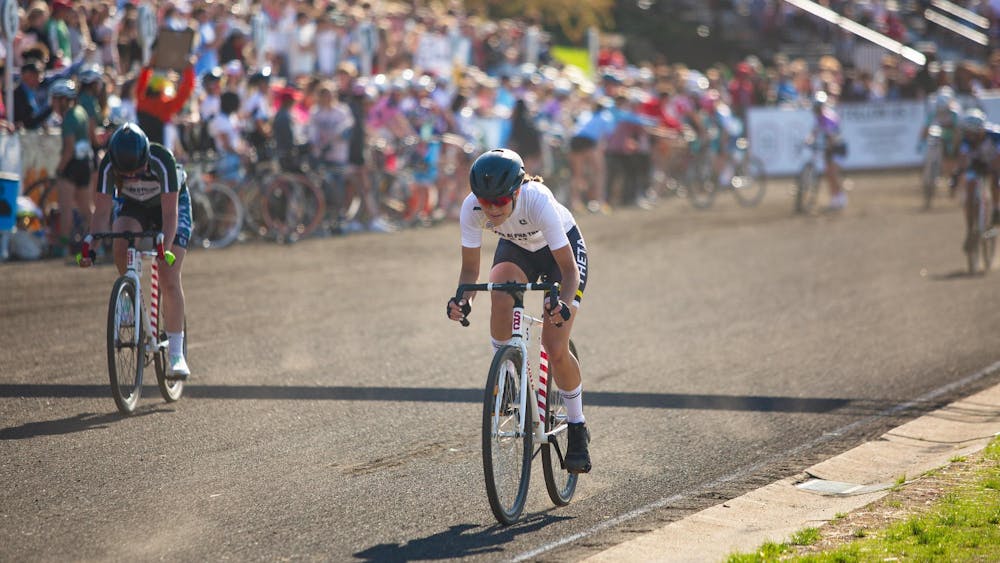Around noon Thursday, IU Police Department Officer Chris Collins and his partner Tery searched the second floor of Beech Hall at Union Street Apartments.
Even with tennis balls to distract him, Tery sniffed around and detected what he was searching for: any chemical that could make a bomb.
Tery, a 2-and-a-half-year-old dog, and Collins, IUPD’s only K9 officer, were part of a K9 unit training for eight K9 police officers throughout the central Indiana area. Depending on their specialty areas, K9 dogs sniffed for drugs or bomb ingredients and practiced tracking suspects.
Collins and Tery usually commute to Hamilton County, just north of Indianapolis, for the 10-hour, once-per-month training days. They have been attending training sessions since Collins started working with Tery in November 2011.
The K9 officers normally train at vacant businesses, sometimes without utilities turned on or any furniture in the building.
“This is a much nicer facility,” Collins said, referring to Beech Hall. “There’s washers and dryers, a kitchen. It’s furnished.”
At Beech Hall, officers conducted all indoor training without having to move to a new facility. The dogs practiced tracking in green space nearby, which kept training in a compact location.
Tery is a bomb-sniffing dog who is also trained to track fleeing suspects.
“There’s hardly any bomb-sniffing dogs south of Indianapolis,” Collins said. “It’s better to have more people around you, more advice.”
Collins said training helps stretch imaginations, giving them ideas for places to search in a real-world police search.
“If you don’t think marijuana can be hidden in a light bulb in a ceiling, you’ll never check there,” Collins said.
On the flip side, training a police dog can be frustrating.
“You know exactly where it is,” Collins said. “But you can’t pick the dog up, put him there and say, ‘Here it is.’”
Collins said it’s crucial for officers to learn to read their dogs’ body language and reward them when they perform their duties well.
Brad Purvis, a Noblesville Police Department K9 officer, walked Collins and Tery through the bomb searches, making sure Tery found all the hidden bomb ingredients.
Bomb dogs need to sniff underneath doors before entering a room or a main doorway — there’s no telling whether opening a door could trigger an explosion. They also need to search with whatever lights are already on in the apartment. The light switch, too, could detonate a bomb.
Collins led Tery through the rooms in an apartment, from kitchen to living room to bathrooms to all four bedrooms. In one bedroom, Tery sat down in front of a bookcase.
Unsure if Tery was messing around or signaling he found something, Collins attempted to distract him.
“What’s this?” Collins asked Tery, tapping a cabinet across the room.
Tery didn’t move.
“Yeah, that’s definitely a positive,” Collins said to Purvis.
Purvis pointed out the signals Tery gave off, indicating he had found something.
“He slows down, he starts breathing really hard,” Purvis said. “And now he won’t leave it until Chris (Collins) gives him his ball.”
Collins tossed Tery a tennis ball, distracting him from the bomb ingredient hidden in the bookcase. Tery lunged for the ball, and Collins led him away to search another room.
After searching multiple suites, Collins and Purvis started to see signs of fatigue in Tery. The training searches are usually longer than a real-world police search of one apartment or one house.
Tery got to cool off in the backseat of Collins’ air-conditioned patrol car before tracking later that afternoon.
The K9 officers are required to do 16 training hours per month, 10 of which they do during the monthly training sessions. Collins pointed out anyone — dog or human — would be worn out after a 10-hour workday.
“We could train eight hours per day every day and that wouldn’t be enough,”
Collins said.
Police K9s participate in drug, bomb, attack training

Get stories like this in your inbox
Subscribe





